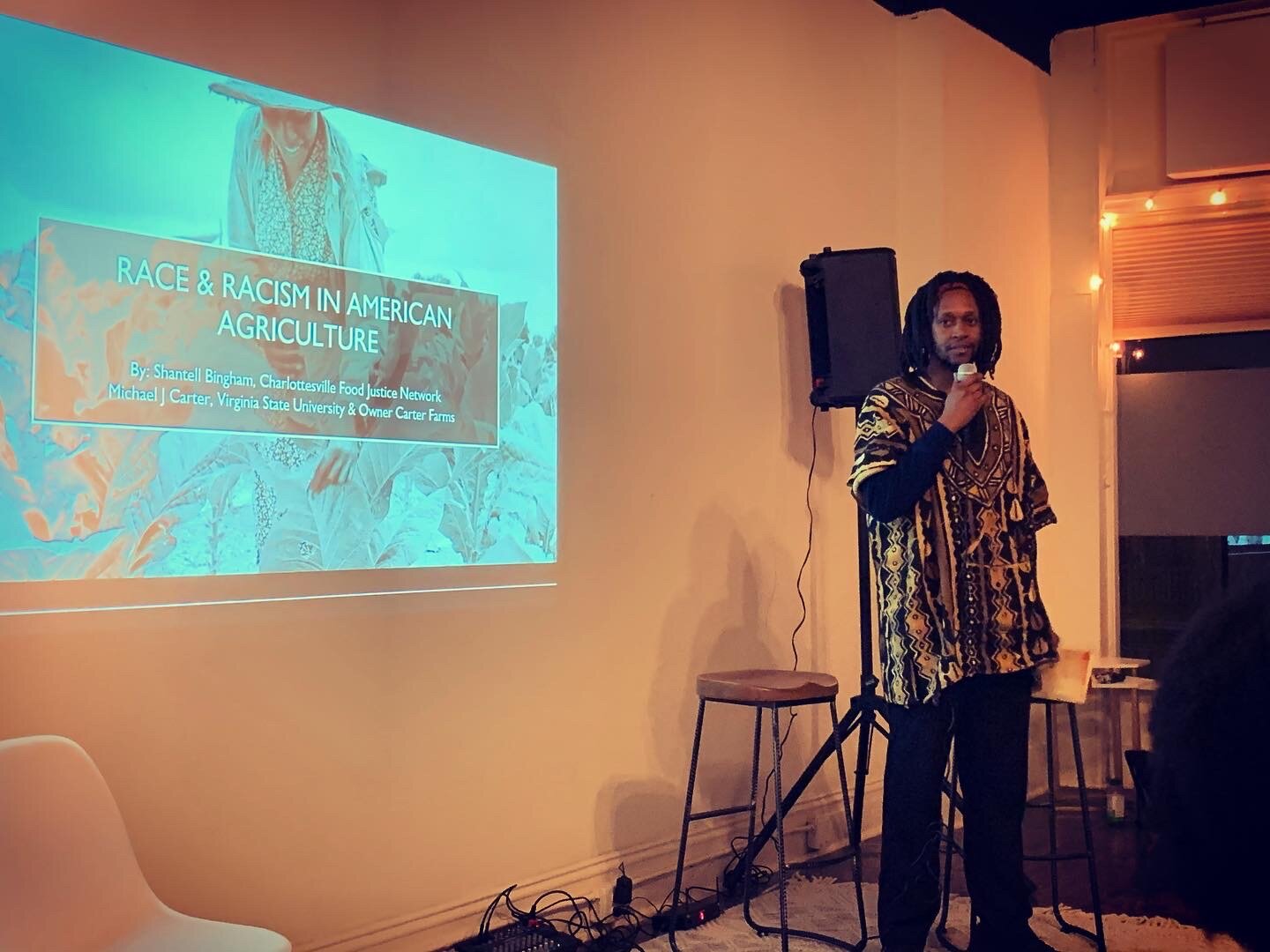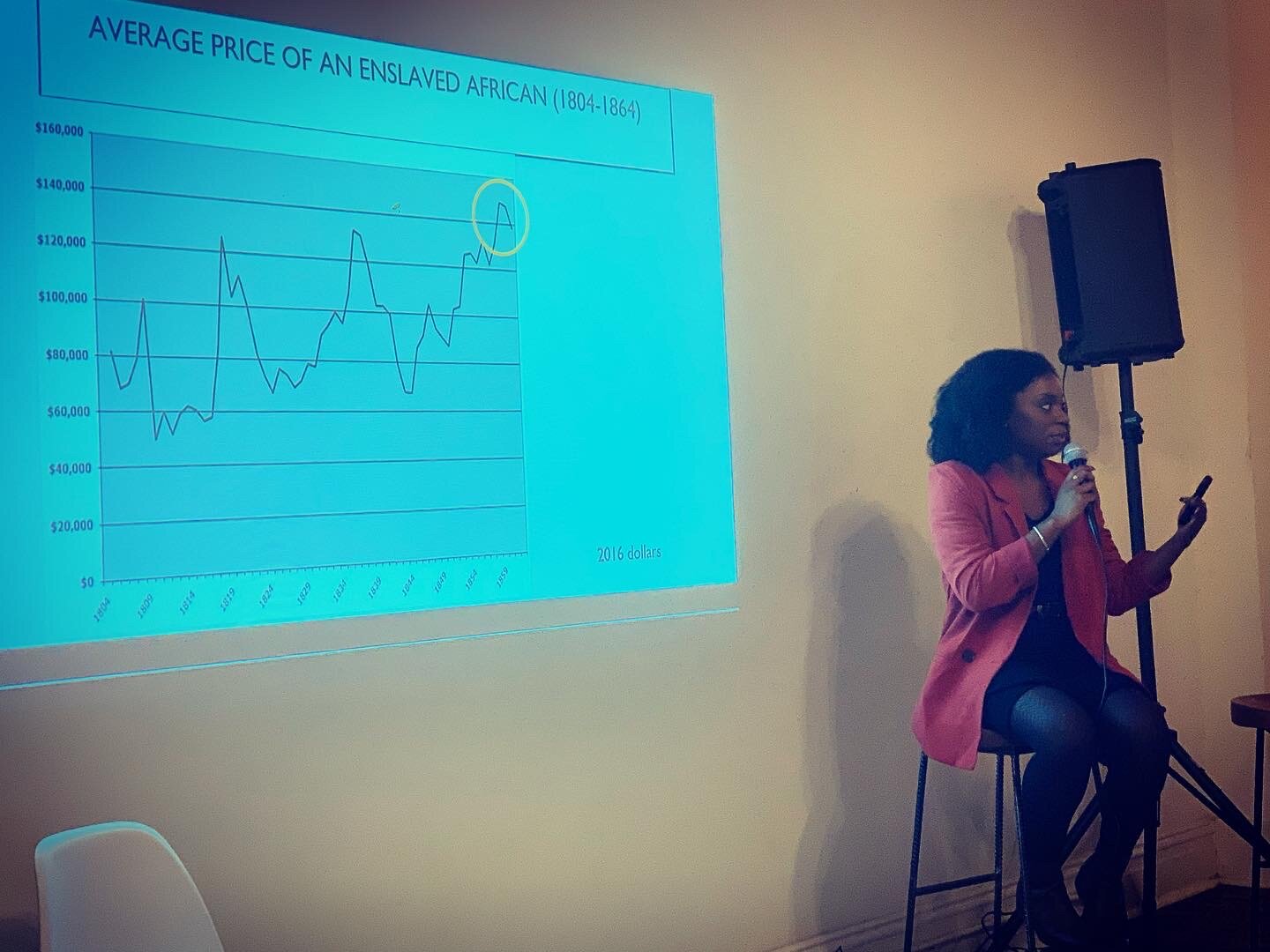Food for Thought: Race & Racism in U.S. Agriculture
“Our ancestors valued the land through hard work and sacrifice. We also have a responsibility to be caretakers of the land,” shared Michael J. Carter, a professor at Virginia State University and owner of Carter Farms, introducing Saturday’s energizing discussion on “Food For Thought - Race & Racism in U.S. Agriculture” at Canvas, organized by Beautiful RVA and Lewis Ginter Botanical Garden with support from Initiatives of Change USA. As someone who has international agriculture experiences in Ghana, Kenya and Israel, he also discussed the contributions of Afri-cultural vegetation to our global capitalist food system and particularly how cocoa, vanilla and the kola nut (used in cola sodas) were cultivated from West African practices. As an 11th generation farmer whose ancestors worked on Shirley Plantation, the oldest family-owned business in North America (inc. 1638), Prof. Carter detailed the difficulty of the journey from the enslaved plantation to sharecropping in the Jim Crow South to rampant racial inequities experienced by present-day Black farm owners and workers.
The rest of the evening was devoted to Shantell Bingham, Director of the Charlottesville Food Justice Network and Co-Founder of Growing for Change, “a collaborative initiative to design and build portable gardens for public housing residents to expand access to healthy foods.” She shared a wealth of historical data about how racist policies and laws were created to prohibit the freedom, movement, wellness and expansion of Black peoples in the U.S over a period of 400 years.
Virginia served as a model for the U.S. in this regard. In 1657, Africans were made into taxable property by law; in 1680, Black peoples had no right to assembly including gathering for funerals and no right to bear arms or defend themselves; in 1705 the Virginia Slave Code passed, and among many things, allowed white owners to enact all forms of violence including death on enslaved persons freely and without punishment. Even though Abraham Lincoln’s creation of the U.S. Department of Agriculture in 1862 was seen as a panacea - it was actually a doubling down - by formalizing racist inequities into an institution (for example, denial of credit and loans, program applications, support and resource services).
In 1910, there were 893,000 Black farmers accounting for 60% of the labor force and ownership with a peak of 926,000 Black farmers in 1920. According to the 2017 census, the number of Black farm producers has steadily declined to 45,508 (1.4%) compared to 3.2 million white farmers, 95% of the U.S. total. For Bingham, it’s important to share this well-documented evidence and spark persistent and honest conversations within our communities. This way we can be accountable to our history and implement policies and laws of racial equity and inclusion into sincere practice.
View the videos below to learn more about Shantell Bingham’s work in food justice.








